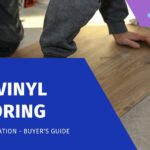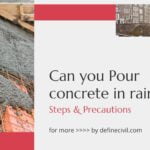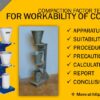So, you’re wondering does heat kill mold? Is your bathroom or kitchen prone to black mold growing? Are you suffering from allergies or asthma? If yes! You’re not alone.
What is mold?
Well, it’s a very common and horrible problem that many people have been fighting. It looks just like black cotton, with tiny little green dots all over it.
If you’ve noticed this in your home or have noticed that in your bathroom or your kitchen windows are fogging up, then you might be dealing with black mold, which is growing in your house and has probably been growing there for quite some time.

Methods of killing mold
There’re various methods of killing mold, some of them includes:
- Using chemical and disinfectants
- Using detergent and vacuum
- Using fans and capturing mold spores
- Using extreme temperatures
Heat has been recommended as the preferred choice for mold remediation over fungicide or disinfectant due to several reasons.
The later includes nasty chemicals but it all depends on your personal preferences and budget. Experts recommend head over disinfectants while dealing with mold inside wall cavities. That’s because heat do have a more penetrating impact.
If you don’t want to use chemical products available in the market that claim to kill mold, here’s a natural way of killing mold – by heat.
Does heat kill mold?
So, the question is can mold be killed by heat? Well, definitely yes!
There are different ways on how to kill mold with temperature in the house. If you don’t want to spend too much money on chemicals, then you might want to read on. But if you have the budget, then you can buy and use those chemicals.
[su_service title=”Also Read” icon=”icon: pencil” icon_color=”#227f24″]Definite ways to make your floor look like new – Read here[/su_service]

How to kill mold with temperature?
If you want to learn how to kill mold with temperature in the house, then here’s the secret.
First you have to understand how it starts. Mold grows in dark, moist places, such as behind walls, in drywall, in basements, and under carpets. To kill mold with temperature in the house, you have to dry these areas out. You can use fans, or place heavy items on top of these areas. If possible, you can throw out items in your basement that has become saturated with moisture.
For effective killing, you should use a room humidifier. Not only will a room humidifier suck up moisture, but it will also emit UV radiation. UV radiation will kill the mold, while simultaneously killing any harmful bacteria.
Here’re steps if you have mold on fabric, wood, or stone.
- First we need to dry the item. We can place it in the dryer, dishwasher with dry setting or inside oven with lowest settings.
- Leave them item there for about 20 to 30 minutes to let it dry completely.
- Now remove the item and wash it with soapy water. You can wash effected fabric in washing machine. That’s set.

How much heat kills mold?
Although mold can easily thrive in warm to hot temperatures, but experts believe that extreme heat over 140 degrees Fahrenheit will get rid of mold on building materials and within food. It is without a doubt, that extreme heat can kill most biological contaminates inside the house.
Dr. Burge in his research paper here has suggested different temperatures that can kill different types of fungi including mold spores.
[su_table responsive=”yes”]
| Activity | Temperature and Duration | Notes |
| Hot dry air sterilization | 1700 C(3400F), 1 hour 1600 C(3200F), 2 hour 1500 C(3000F), 2.5 hour 1400 C(2850F), 3 hour | Kills virtually all spores |
| Wood heat treatment for rot resistance | 2000 C(3920F), 24 hour | Changes structure and color of the wood |
| Whole house treatment for termites and/or fungi | 710 C(1600F),4-6 hour | |
| Penicillium spore death in water | 54.40 C(1300F), 30 minutes | |
| Ascospores activation in grape juice | 700 C(1580F), 30 minutes | This is higher than the temperature that kills penicillium in water |
| Germination of chlamydospores in Cladosporium-related species stimulated by moist heat | 750 C(1670F), 30 minutes | This is higher than the temperature which kills penicillium in water |
[/su_table]
Here’s another handy advice from USDA,
Most yeasts and molds are heat-sensitive and destroyed by heat treatments at temperatures of 140-160°F (60-71°C). Some molds make heat-resistant spores, however, and can survive heat treatments in pickled vegetable products.
[su_service title=”Also Read” icon=”icon: pencil” icon_color=”#227f24″]Things you should consider before buying refrigerator – Read here[/su_service]
It’s not just the mold itself but it’s the moisture too
Now that you know you can kill mold with temperature in the house, so how do you get rid of?
You might need a combination of both. First, get rid of the moisture. This can be done with fans or by installing heavy-duty appliances that can suck up moisture from the air. It is also advisable to install caulk around the perimeter of your basement and walls, in order to seal in the moisture and prevent mold from growing back.
Once you’ve gotten rid of the moisture, you need to kill the mold. There are several types of mold and you will have to get rid of each one differently. A strong disinfectant should be used for this step. Choose a strong, biodegradable product that does not contain caustic chemicals. You can find these products at your local hardware store or online.
Keep in mind that you can’t completely eliminate mold with heat; you can only limit its growth.
Even some of its part may become dormant after cooking in heat but it does not disappear altogether. Even the dead mold can create airborne diseases.
So, as long as you remove the moisture and prevent it from coming back, you will kill most of them.
[su_service title=”Also Read” icon=”icon: pencil” icon_color=”#227f24″]WPC Board – a sustainable solution – Read here[/su_service]
Other methods of killing mold – using blowers and vacuum cleaners
Here’s what you need to do to get rid of the problem.
The first step is to clean your home thoroughly. This is really easy. All you need to do is to get a vacuum cleaner that can handle mold and dirt, and start cleaning. The longer you take to clean, the better, because this is a long-term solution.
If you don’t get rid of the mold right away, you’re going to have a bigger problem, which will be harder to get rid of. You also don’t want to get rid of it with too much force. This might hurt you or the people in your house. So, you should follow the simple steps below:
Instead of using regular cleaning detergents, you should use a bleach-water solution. The bleach-water solution won’t harm you, and it’s good for the environment as well.
After disinfecting your carpet with bleach-water, get a vacuum cleaner that has HEPA filters. Get a soft cloth that can be dipped in bleach-water, and get a piece of cloth that can be laid across the surface of the area that needs cleaning. Use the soft cloth to scrub the area. The scrubbing action will help to get rid of the mold spores, along with removing the dead cells.
The problem with vacuum cleaners
Hot air blowers can infect your house further. While blowing air, it can spread mold spores around. So, if you have food in your house, never install fans. Instead, set air scrubbers inside the containment area so it can capture mold spores as hot air blows.
So, you see heat is definitely comes handy for killing mold without having much trouble.
[su_service title=”Also Read” icon=”icon: pencil” icon_color=”#227f24″]Tie Down Anchors for Mobile home – Read here[/su_service]
Be Careful with heat
So, you see heat is a preferable method of killing mold but at the same time you have to very careful. Heat can cause damage to furniture and your belongings inside the house. Some products like plastic can emit harmful chemicals. So, precautions should be taken while using heat to prevent damage to home fixtures.


















